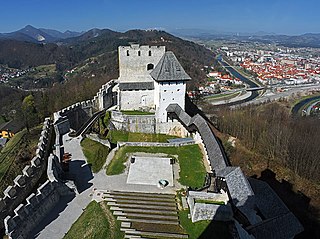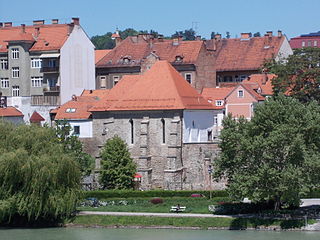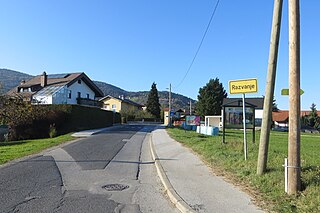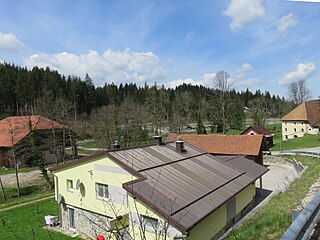A








Maribor is the second-largest city in Slovenia and the largest city of the traditional region of Lower Styria. It is also the seat of the Urban Municipality of Maribor, the seat of the Drava statistical region and the Eastern Slovenia region. Maribor is also the economic, administrative, educational, and cultural centre of eastern Slovenia.

Ptuj is a town in northeastern Slovenia that is the seat of the Municipality of Ptuj. Ptuj, the oldest recorded city in Slovenia, has been inhabited since the late Stone Age and developed from a Roman military fort. Ptuj was located at a strategically important crossing of the Drava River, along a prehistoric trade route between the Baltic Sea and the Adriatic. The area is part of the traditional region of Styria and was part of the Austria-Hungarian Empire. In the early 20th century the majority of the residents spoke German, but today the population is largely Slovene.

Nogometni klub Maribor is a Slovenian professional football club based in Maribor, Slovenia. It competes in the Slovenian PrvaLiga, the top tier of the Slovenian football league system. Nicknamed "The Purples", the club was founded on 12 December 1960. They are regarded as a symbol of Slovenian football, particularly in their home region of Styria in northeastern Slovenia.

Styria, also known as Slovenian Styria or Lower Styria to differentiate it from Austrian Styria, is a traditional region in northeastern Slovenia, comprising the southern third of the former Duchy of Styria. The population of Styria in its historical boundaries amounts to around 705,000 inhabitants, or 34.5% of the population of Slovenia. The largest city is Maribor.

Brežice is a town in eastern Slovenia in the Lower Sava Valley, near the Croatian border. It is the seat of the Municipality of Brežice. It lies in the center of the Brežice Plain, which is part of the larger Krka Flat. The area was traditionally divided between Lower Styria and Lower Carniola. The entire municipality is now included in the Lower Sava Statistical Region.

Podlehnik is a settlement in the Haloze Hills in eastern Slovenia. It is the seat of the Municipality of Podlehnik. The area traditionally belonged to the region of Styria. It is now included in the Drava Statistical Region.

Ljubljana Castle is a castle complex standing on Castle Hill above downtown Ljubljana, the capital of Slovenia. It is a key landmark of the town. Originally a medieval fortress, it was probably constructed in the 11th century and rebuilt in the 12th century. It acquired its present outline with an almost complete overhaul in the 15th century, whereas the majority of the buildings date to the 16th and 17th centuries. Initially a defense structure and since the first half of the 14th century the seat of the lords of Carniola, it was since the early 19th century used for various other purposes and today is used as a major cultural venue.

Tivoli Castle, originally called Podturn Manor, is a mansion in Ljubljana, the capital of Slovenia.

The Maribor Water Tower is a medieval fortified tower in the city of Maribor, Slovenia. The late-Renaissance tower stands directly abuts the Drava River and dates from 1555. It is of pentagonal form and consists of massive stone blocks interspersed with embrasures. It was built to secure the southeast part of the Maribor city walls from the direction of the river.

Celje Castle, also known as Celje Upper Castle or Old Castle, is a castle ruin in Celje, Slovenia, formerly the seat of the Counts of Celje. It stands on three hills to the southeast of Celje, where the river Savinja meanders into the Laško valley. Today, the castle is in the process of being restored. It was once the largest fortification on Slovenian territory.

Maribor Castle is a Baroque mansion in the town of Maribor, northeastern Slovenia. It contains a regional museum.

Maribor Synagogue is a former Orthodox Jewish congregation and synagogue, located in what was the center of the medieval Maribor ghetto Židovska ulica, in the city of Maribor, Slovenia. The former congregation was established in the 14th cnetury and worshiped in the Ashkenazi rite.

Razvanje is a village south of Maribor in northeastern Slovenia. It belongs to the City Municipality of Maribor.

Sevnica Castle is a Slovenian castle in the Lower Sava Valley. Situated atop a hill, it dominates the old town of Sevnica and offers views of the surrounding countryside.

The Baumkircher Tower, also known as Tabor Castle or Lower Castle, is a defensive tower or small castle located in the town of Vipava in southwestern Slovenia.

Mače is a small village in the Municipality of Preddvor in the Upper Carniola region of Slovenia.

Ig Castle, also Sonnegg Castle or Zonek Castle, stands on Pungart Hill above the settlement of Ig, on the southern outskirts of Ljubljana, the capital of Slovenia.

Leskovec Castle or Turn Castle is a 15th-century castle north of the village of Leskovec pri Krškem, southeastern Slovenia. It has been redesigned in the 16th and the 18th centuries.

Ortnek is a settlement in the Municipality of Ribnica in southern Slovenia. The railway line from Ljubljana to Kočevje runs through the settlement and the village has a railway station. The area is part of the traditional region of Lower Carniola and is now included in the Southeast Slovenia Statistical Region.

Rače is a settlement in and the administrative centre of the Municipality of Rače–Fram in northeastern Slovenia. It lies under the eastern Pohorje Hills on the edge of the plain on the right bank of the Drava River south of Maribor. The area is part of the traditional region of Styria. The municipality is now included in the Drava Statistical Region.